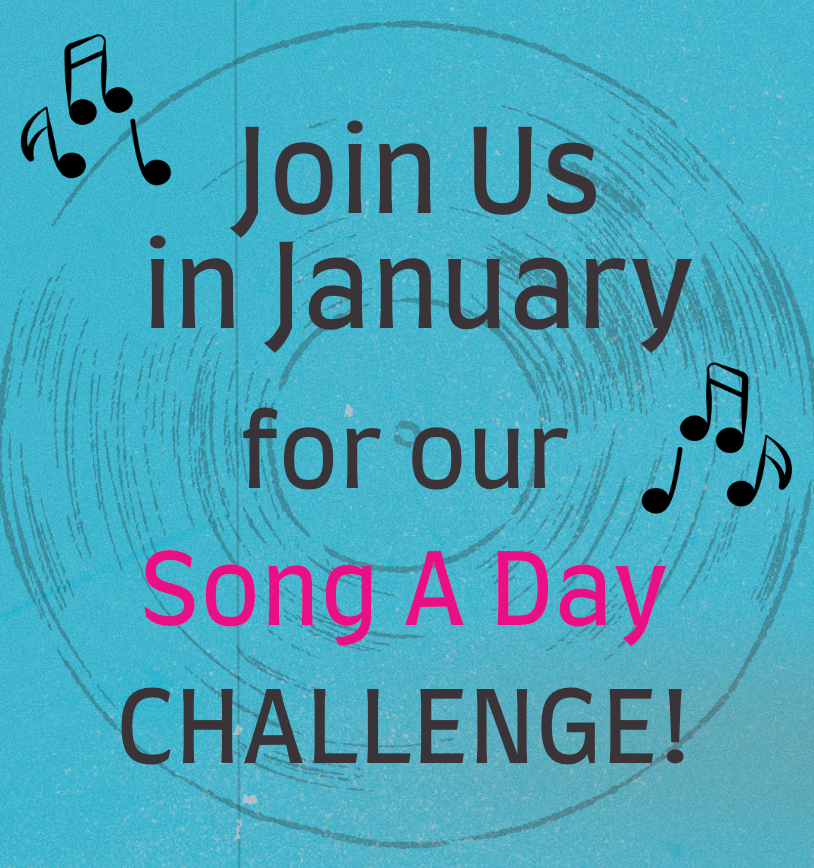
Why Lyrics are Both Easy and Hard
Oct 14, 2023For whatever reason, lyrics seem to be both the easiest way into songwriting as well as the most challenging. Easy because they access language that we already have - no need for harmonic or melodic vocabulary - but hard because there just isn't a lot of real estate to say everything you want to say.
In this blog post, I want to talk about ways to engage with lyrics so that you can make great use of the little amount of real estate to say what you need to say (John Mayer reference...anyone?)
Prompts
At SFME this month, it's all about lyrics. Lyric craft is totally something you and your students can practice. Using constraint based writing techniques - or prompts - is a great way to practice working on lyric craft. After practicing different aspects of the craft using prompts, then, when you have something really emotionally important to say, you're not hemming and hawing over how to say it. Because you've learned techniques to help your lyric craft grow, what you want to say just seems to flow out of you and land almost exactly the way you want it to land. Like the magic people talk about when they write songs :)
One prompt that I give my students is to write a V C V C C song based on a book or a movie. The verses all have to have an A B C B rhyme scheme and the choruses have to have an AABB rhyme scheme. This gets at a few different aspects of lyric craft:
1) Rhyme scheme: what it is, what rhyme is and how having different rhyme schemes in each section helps to create sectional identity so that both the verse and chorus 'feel' different
2) Form: this is one of the most popular song forms and being able to write a hooky chorus that 'feels different' each time because of the information in the verses is a really powerful tool for keeping a listener interested and engaged. Plus, because it's based on a pre-existing story that has a beginning, middle and end, that part of it kind of naturally takes shape
3) Prosody: With this assignment, I usually don't allow harmonic accompaniment - so it's just melody and lyrics. This helps students really focus on how the phrasing and melodies in the two sections differ and helps students without a lot of musical knowledge gain confidence.
My favorite example of this so far has been a student who was a music business major taking my beginning songwriting course at Berklee. He was a senior and wanted to know more about the process of songwriting so he could better help his potential future clients. He wrote a song based on the move Nemo, in the style of Emo and it had the entire class just laughing and having such a wonderful time with the entire process. I've shared a verse and chorus (with his permission) below:
Oh Nemo, your mom would be so mad at meI told you, not to touch the Butt,
Oh Nemo, tryna act all cool,
You went off on your own, and now you’re stuckI’d go from ocean to ocean and sea to sea,Swim all the places that a fish could beWhere the coral grows and the ships had sankOh no Oh no oh no you were stuck in a fish tank
Notice the rhyme scheme and the rhythm of the sections and how even without the music you can hear the difference between the verse and chorus.
Make your own prompts
Whatever you want your students (or you want) to work on, you can create a prompt for that particular skill. Want them to write in a specific form? Want them to create a song with a lot of image and sensory detail? Want them to work on their phrasing? Create prompts - essentially lesson plans - for those skills and have students write either parts of songs or entire songs! It's a great way to just build skills so that when they go to create their own unique songs they have tools to fall back on! Check out our freebie on "writing to pitch" or our on-demand video workshop "Writing to Pitch" to get even more ideas!
Songwriting is fun - but it's also challenging in so many wonderful ways. I dare you to explore some of these ideas and challenge yourself and your students to really dig into the craft.
Kat

